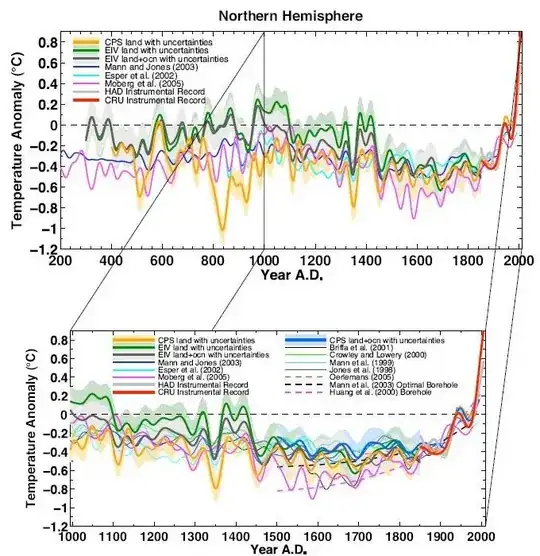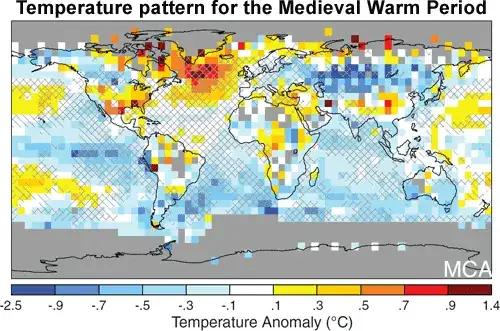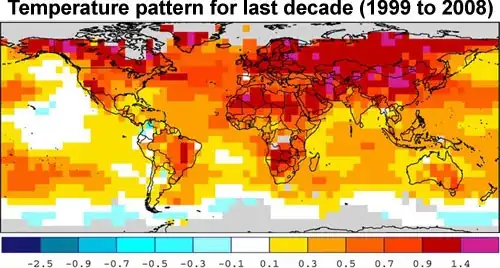It is highly unlikely that the medieval warm period was, globally, warmer than current.
The IPCC 4th Assessment Report graphed a dozen different replications of the "hockey stick" graph, along with the instrumental record. This is for the Northern Hemisphere, which has both the best paleoclimate record and that's also where the various forms of historical evidence (such as the agricultural evidence and Viking settlements) are located. 
We can see from this that there are a few short patches in the 10th and 12th century which may possibly be warmer than today - it's just not very likely that they are. While most reconstructions do include a MWP that was slightly warmer than the temperatures around that period, it was probably not higher than the present-day average.
In addition, according to Mann et. al. (2008):
The reconstructed amplitude of change over past centuries is greater than hitherto reported, with somewhat greater Medieval warmth in the Northern Hemisphere, albeit still not reaching recent levels.

According to Surface Temperature Reconstructions for the Last 2,000 Years, a book written by the National Research Council:
Presently available proxy evidence indicates that temperatures at many, but not all, individual locations were higher during the past 25 years than during any period of comparable length since A.D. 900.
For interest, Ljungqvist (2009) plotted a number of paleoclimate proxies for a number of different regions. Remember, many of these will only include data up to about 1950 or so. In many of these records, current temperatures are lower than during their medieval warm peak. However, the exact time of that peak varies - which probably helps to explain why many locations contain a MWP and yet it is less pronounced in larger scale hemispheral or global records.



